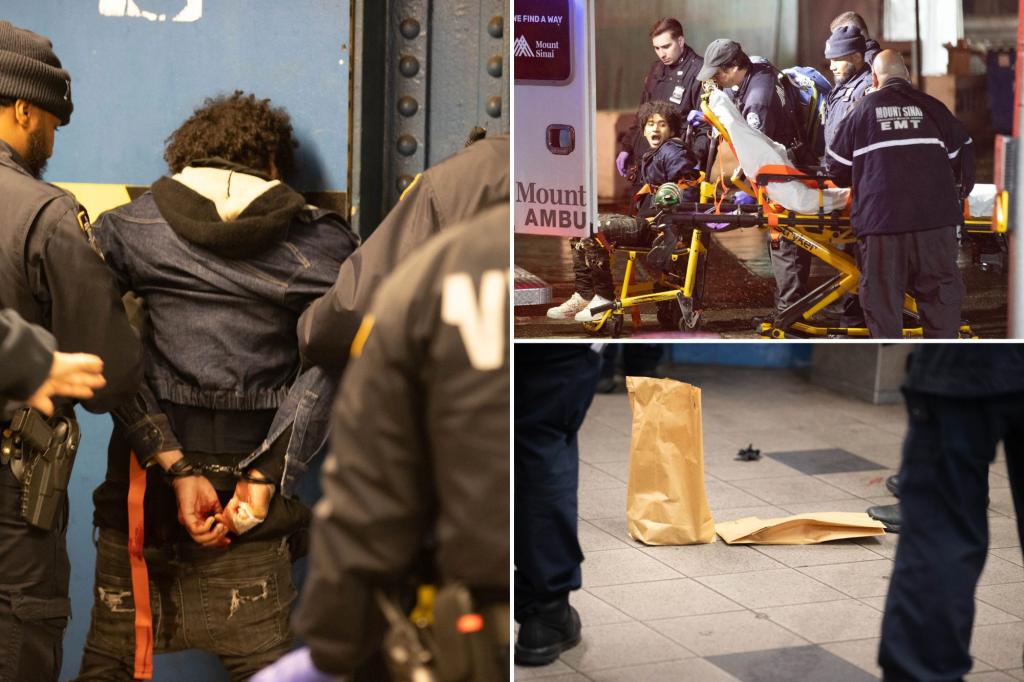The incident, occurring at approximately 1:21 a.m. on a Monday morning, unfolded on the northbound C train platform at 50th Street and 8th Avenue. The victim, a 48-year-old man, became embroiled in a dispute, the specifics of which remain undisclosed at this time. The altercation escalated, culminating in the victim sustaining a slash wound to the neck. Emergency services were promptly dispatched to the scene, and the injured man was transported to Bellevue Hospital. His condition is reported as stable, indicating that while the injury was serious, it does not appear to be immediately life-threatening. Following the incident, law enforcement initiated a search for the perpetrator. Photographic evidence suggests a suspect was apprehended near 59th Street and Columbus Circle, sporting blood-splattered sneakers. Charges against the individual are currently pending as the investigation progresses.
This unsettling event further underscores the pervasive issue of safety and security within the New York City subway system. The incident follows a disturbing trend of violent occurrences within the transit network, raising concerns amongst commuters and authorities alike. The slashing comes on the heels of several high-profile attacks, including the tragic death of a woman who was set on fire while sleeping on a train in Coney Island just days prior. These incidents have sparked a renewed dialogue on the effectiveness of current safety measures and the urgent need for enhanced security protocols within the subway system.
The timing of the slashing incident holds particular significance in the context of the ongoing debate surrounding subway safety. Just a day prior, the Guardian Angels, a volunteer citizen patrol group, announced their intention to reinstate patrols within subway cars. This decision directly reflects the heightened anxiety surrounding safety within the transit system and the perceived inadequacy of existing security mechanisms. The Guardian Angels’ return to patrolling represents a grassroots effort to address the issue and provide a visible presence intended to deter potential criminal activity. Their presence, while welcomed by some, also raises questions about the role of civilian patrols in maintaining public safety and the potential implications for interactions with law enforcement.
The recent surge in violent incidents within the New York City subway system has prompted a reassessment of security strategies and a search for comprehensive solutions. Authorities face the complex challenge of balancing the need for increased security measures with the imperative to maintain the accessibility and efficiency of the transit network. The escalating violence necessitates a multifaceted approach, encompassing increased police presence, enhanced surveillance technologies, and potentially, greater engagement with community-based initiatives like the Guardian Angels.
Beyond the immediate response to these incidents, the larger issue of addressing the root causes of crime within the subway system requires significant attention. Factors such as homelessness, mental health issues, and substance abuse often contribute to the complex web of challenges facing the transit network. Effective solutions must address these underlying issues through comprehensive social programs and support services aimed at providing assistance and resources to vulnerable individuals. A holistic approach that combines enhanced security measures with proactive social interventions offers the most promising pathway towards creating a safer and more secure environment for all subway riders.
The slashing incident, along with the tragic events preceding it, serves as a stark reminder of the vulnerabilities inherent within public transportation systems. The incident highlights the urgent need for collaborative efforts involving law enforcement, transit authorities, community organizations, and individuals to address the multifaceted challenges surrounding safety and security. By implementing comprehensive strategies that address both the immediate security concerns and the underlying social factors contributing to crime, New York City can strive to create a subway system that is safe, accessible, and reliable for all its citizens. The ongoing dialogue and evolving responses to these incidents represent a crucial step towards achieving this critical objective.

